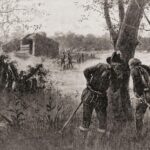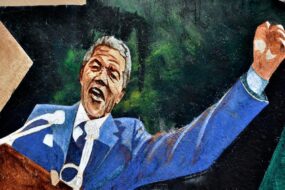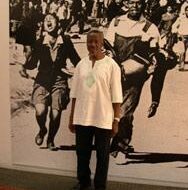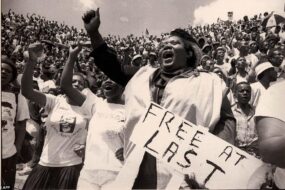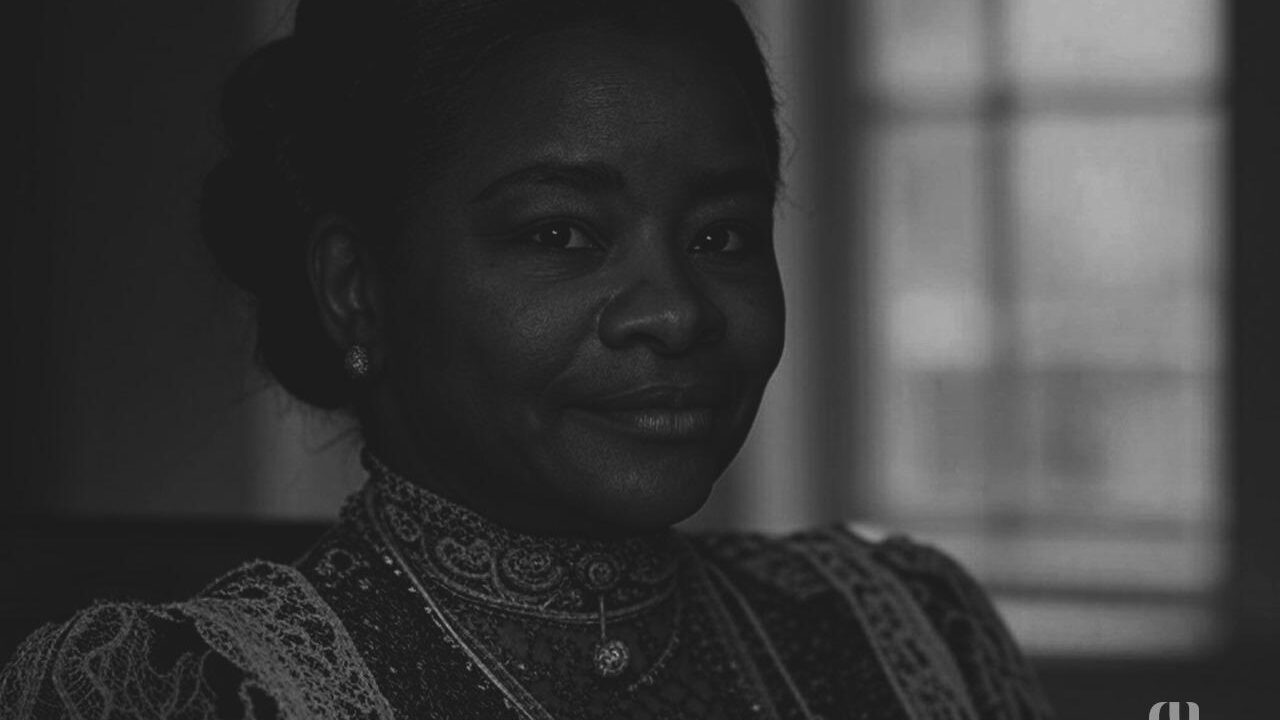
“The Secret South African Mind-Control Experiments: Unveiling Project Coast”
Imagine being part of a secret experiment where the boundaries of human psychology and advanced technology blur. What if you discovered a government project designed to manipulate and control people’s minds, using methods so sinister that even speaking about it could land you in prison? Behind the locked gates of a South african laboratory, the apartheid regime embarked on a journey that would shock the world.
In the 1980s, south Africa was in turmoil. The apartheid government, desperate to maintain control, began exploring unconventional methods to suppress dissent. Amidst this chaos,a sinister project was born – Project Coast. conceived by the South African defense Force (SADF), this clandestine operation aimed to develop advanced biochemical and psychological warfare capabilities. The project’s scope was vast, involving the creation of potent toxins, incapacitating agents, and mind-control techniques.
The mastermind behind Project Coast was Dr. Wouter Basson, a chemist with a vision to create an arsenal of chemical and biological weapons. Basson’s team worked tirelessly to develop an array of deadly substances, from nerve agents to psychoactive compounds. Their goal was to equip the south African military and police with tools to subdue and manipulate both internal and external threats. As the project progressed, its researchers pushed the boundaries of ethics and morality, delving into the darkest corners of human psychology.
One of the most shocking aspects of Project Coast was its focus on mind control. The researchers experimented with various psychoactive substances, testing their effects on unsuspecting subjects. These experiments often involved prisoners, dissidents, and even innocent civilians, who were either coerced or deceived into participating. The goal was to create a “truth serum” that could extract information from enemies of the state, and also develop methods to brainwash and control individuals. The methods used were brutal and inhumane, leaving many test subjects with long-lasting psychological trauma.
As Project Coast gained momentum, its operatives began to explore the use of chemical and biological agents in covert operations. They developed methods to disperse these substances in public spaces, aiming to incapacitate crowds and quell anti-apartheid protests. The apartheid regime saw this as a means to maintain control without resorting to conventional force, which could draw international attention and condemnation. However, these actions only fueled the flames of resistance, as activists and human rights groups began to uncover evidence of the sinister experiments.
The existence of Project Coast remained a closely guarded secret untill the early 1990s,when the apartheid regime began to crumble. As the Truth and Reconciliation Commission (TRC) was established to investigate human rights abuses, testimonies about Project Coast began to surface. Dr. Wouter Basson, once a proud architect of the project, found himself in the spotlight, forced to confront the consequences of his actions. the TRC’s revelations shocked the nation, sparking widespread outrage and demands for accountability.
In the aftermath of Project Coast’s exposure, south Africa faced a long and arduous process of healing and reconciliation. The country had to come to terms with the horrors that had been perpetrated in the name of national security. The legacy of Project Coast serves as a stark reminder of the dangers of unchecked power and the importance of protecting human rights. Today, the story of Project Coast stands as a testament to the dark side of human ingenuity and the need for vigilance in the face of government overreach.
The story of Project Coast is a chilling reminder that the pursuit of scientific knowledge must always be tempered by ethics and compassion. As we reflect on this dark chapter in South African history,we are reminded of the importance of openness,accountability,and the protection of human rights. The secrets of project Coast may have been hidden for years, but its impact will be felt for generations to come.
#SouthAfricanSecrets #HiddenHistory #MilitaryExperiments #GovernmentProjects #ClassifiedSouthAfrica #InfographicStory #TrueStory #AfricanHistory #ProjectCoast #MindControlExperiments #ApartheidRegime #HumanRightsAbuses #TruthAndReconciliationCommission #SouthAfricanHistory
<img class="bimage_class" src="https://campusstore.co.za/wp-content/uploads/2025/04/m-2529.jpg" alt="the Forgotten Heroine who Sparked a Nation: The Unstoppable Madam C.J. Walker
Imagine being born into poverty, with nothing but the clothes on yoru back, and yet rising to become one of the wealthiest self-made women of your time. Sounds like a fairy tale, right? But for Madam C.J. Walker, this was her reality. Born Sarah Breedlove in 1867 in Louisiana, she would go on to shatter glass ceilings, defy racial barriers, and become a symbol of hope for millions of African Americans during one of the darkest periods in American history.But before we dive into her unbelievable journey, let’s set the stage: it was the era of Jim Crow laws, where segregation and racism were rampant, and opportunities for black people were scarce.
Sarah’s early life was marked by hardship and struggle.Orphaned at the age of seven, she was forced to fend for herself, working as a domestic worker to make ends meet. But she was determined to escape the vicious cycle of poverty. She moved to Denver, Colorado, where she met her third husband, Charles J. Walker, a salesman who not only supported her ambitions but also encouraged her to pursue a buisness venture that would change her life forever.It all started when Sarah began to experience hair loss due to a scalp condition, a common issue among African American women at the time.Frustrated by the lack of effective solutions, she began to experiment with different products and techniques, eventually developing her own line of hair care products.
With Charles’s backing,Sarah launched her business,initially selling her products door-to-door and through mail-order. But she didn’t stop there. She was a shrewd marketer, using her charm and charisma to build a sales team of black women who were empowered to sell her products across the country. She traveled extensively, giving demonstrations and lectures on hair care and business management, earning her the title of “Madam” – a mark of respect and dignity in the black community. As her business grew, so did her influence. She became a vocal advocate for women’s rights, economic empowerment, and civil rights, using her platform to challenge the status quo.
The year was 1910, and Madam Walker had just moved to Indianapolis, where she established her headquarters and built a factory, a beauty school, and even a hair salon. She was on a mission to create opportunities not just for herself but for other black women who were marginalized and excluded from mainstream society. Her business model was revolutionary – she trained and employed thousands of black women, giving them the skills and confidence to become entrepreneurs in their own right. by doing so,she was not only building a business empire but also challenging the racist stereotypes that had held black people back for centuries.
As Madam Walker’s fame grew, so did her philanthropic efforts.She donated generously to various causes, including the NAACP, the Tuskegee Institute, and the YMCA, and was a vocal supporter of the anti-lynching movement. She even offered a $5,000 reward for the conviction of lynching perpetrators, a bold move that drew both praise and criticism. But Madam Walker was undeterred. She continued to use her wealth and influence to push for change, becoming one of the most respected and admired figures in the black community.
but Madam Walker’s rise to fame wasn’t without its challenges. She faced intense competition from other black entrepreneurs, including rival hair care businesses. She was also criticized by some for promoting a beauty standard that was seen as Eurocentric, perpetuating the idea that straight hair was more desirable than natural hair. Though, Madam Walker remained committed to her vision, arguing that her products were not just about aesthetics but also about promoting self-care and self-love.
As the years went by, madam Walker’s legacy continued to grow. She became a role model for generations of black women, showing them that with hard work, determination, and a willingness to take risks, they too could achieve greatness. When she passed away in 1919, her estate was estimated to be worth over $600,000, a staggering amount for a black woman at the time. But more importantly, she had left behind a lasting legacy – a testament to the power of entrepreneurship, activism, and community building.
Today, Madam C.J. Walker’s story serves as a powerful reminder of the impact one person can have on the world. She may have started with nothing, but she left behind a fortune that continues to inspire and empower people to this day. As we reflect on her life and legacy, we’re reminded that true greatness is not just about achieving success but about using that success to make a difference in the lives of others.#InfographicStory #WorldHistory #HistoricalFigures #BlackHistory #WomenEmpowerment #Entrepreneurship #CivilRights #DidYouKnow #TrueStory #HistoryNerd #GlobalFigures #MadamCJWalker #SelfMade #Legacy #Inspiration”>



